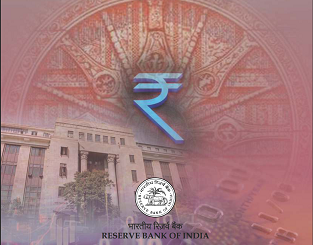
Despite some notable contrarian opinions in this regard, a majority of the analysts and market participants believed that the MPC would keep the policy rate unchanged at 4% in its meeting that concluded on August 6. After all, the effectiveness of another rate cut on top of the cumulative 115 basis point cut in the previous two meetings that were arranged off-cycle, resulting in an aggregate rate reduction of 250 basis points since February 2019 in boosting economic activity would have been minimal. Moreover, it would be injudicious for the MPC to quickly expend its remaining rate cutting firepower in the present situation, when there are chances of further large shocks. However, there was a broad consensus that the MPC will majorly focus on the issue of growth revival in the economy through higher and better credit flow. An announcement of fresh measures for restructuring MSME loans affected by the Covid-19 pandemic was also expected. These have been largely met.
It would be injudicious for the MPC to quickly expend its remaining rate cutting firepower in the present situation, when there are chances of further large shocks.
The equity market rose, while the 10-year benchmark G-Sec price fell a little bit after the policy.
Growth and inflation dynamics
Overall, the economy is likely to contract in 2020-21. Gradual restoration of supply chains after lockdown relaxations notwithstanding, the demand conditions continue to be very weak: consumer confidence turned more pessimistic in July, 2020 vis-à-vis the preceding round of the RBI’s survey. However, the agricultural sector appears to be one bright spot, both from supply as well as demand perspectives. The prospects of this year’s kharif output looks bright on the back of several important indicators. This follows the record production and procurement in the last rabi season. As pointed out by the MPC, rural demand has received a boost by these developments, as reflected in fertiliser production and the sales of tractors, motorcycles and FMCG items. There are incipient signs to infer that the terms of trade are becoming more favourable for the primary sector, as a whole, which, if correct, needs to be supported by policy measures for strengthening this sector’s supply response as also to lessen the reliance on the instrument of minimum support price (MSP).
Rural demand has received a boost, as reflected in fertiliser production and the sales of tractors, motorcycles and FMCG items.
A growth revival in 2021-22 is possible, but there are many ifs and buts: sustained uptick in demand should be observable in Q2 of the current fiscal and subsequently; no protracted spread of the pandemic; monsoon behaving well; financial stability in India and abroad etc. All in all, the risks seem to be stacked more on the downside, indicating a long wait before the economy comes out of the red. The MPC is surely aware of such a possibility, which is why it has pledged to maintain the current accommodative stance for as long as necessary.
As per the provisional estimates, headline CPI inflation rose to 6.1% in June, 2020 from 5.8% in March, 2020. Inflation excluding food and fuel was at 5.4% in June, reflecting a spike in prices almost across the board. Headline inflation is likely to remain elevated in Q2:2020-21, but may moderate in the second half of 2020-21, aided by large favourable base effects. If headline inflation falls and growth headwinds persist, MPC will slash the rate further.
Financial stability issues
The RBI deserves some credit for alleviating stress in the financial markets and for building confidence in the wake of the pandemic outbreak, which involved interventions for injecting short-and-long-term rupee liquidity to the tune of ₹9.57 lakh crore or 4.7% GDP. These have had three important outcomes: One, despite the Central government’s market borrowing requirement for 2020-21 being raised from ₹7.1 trillion to ₹12 trillion, the yield of the 10-year benchmark G-Sec did, in fact, registered a moderate drop.
The RBI deserves some credit for alleviating stress in the financial markets and for building confidence in the wake of the pandemic outbreak
Two, the credit spread of the borrowings by entities across all the rating categories dropped significantly. Three, corporates, including NBFCs have borrowed record amounts at lower cost, thereby putting an end to the liquidity crunch engendered by IL&FS and DHFL defaults in 2018 and 2019 respectively. Mutual Fund’s liquidity difficulties have also been addressed. The average lending rates on fresh loans of banks fell by 91 basis points during March – June, 2020. Transmission of the monetary policy in the face of unprecedented disruptive shocks is happening.
Economic shock of the pandemic and PSB reform
However, a pertinent issue here is whether the real sector’s response has been in unison with the favourable conditions in the money and debt markets? The latest Financial Stability Report (FSR) of the RBI provides some clue in this regard: One, it acknowledges a growing disconnect between the movements in certain segments of the financial markets and real sector activity. Two, it reveals that deleveraging by the private corporate sector stalled during the second half of 2019-20 with leverage increasing due to higher borrowings. Incremental borrowings were used towards creating financial assets and not for capex formation, as demand conditions remained muted. And the prices of gold and silver have surged in the recent months.
One needs only to connect the dots to surmise what the short-term outcomes of the liquidity surge in India and elsewhere are likely to be, keeping in mind the continued very sluggish growth in bank credit flow in India for more than a year. This can have adverse consequences for the government’s aid package aggregating ₹21 lakh crore to counter the effects of the pandemic, since a sizeable portion of it depends on additional credit disbursement by banks. But as pointed out in the FSR, all categories of banks, including public sector banks (PSBs) have turned risk averse, as they are now increasingly discriminating between bad and good risks. This is good news for financial stability in India although it may not be so for fighting the pandemic.
After the PSBs contend with the increase in their NPAs on the lifting of the current moratorium on loan servicing, their gross NPAs are likely to rise from the current 11.3% to above 15% in less than 2 years.
After the PSBs contend with the increase in their NPAs on the lifting of the current moratorium on loan servicing toward the end of this year and if they lend fully as per all the schemes that will be put in place, including those for restructuring to deal with the pandemic, their gross NPAs are likely to rise from the current 11.3% to above 15% in less than 2 years. This points towards a cruel trade off, that could have been done without, if only the authorities implemented a thoroughgoing reform of PSBs when the going was good.
In the FSR, commitment to long-term financial stability on the part of RBI reads like a mission statement. But it will make little difference if PSBs are not reformed.
(The writer is a former central banker and consultant to the IMF)







